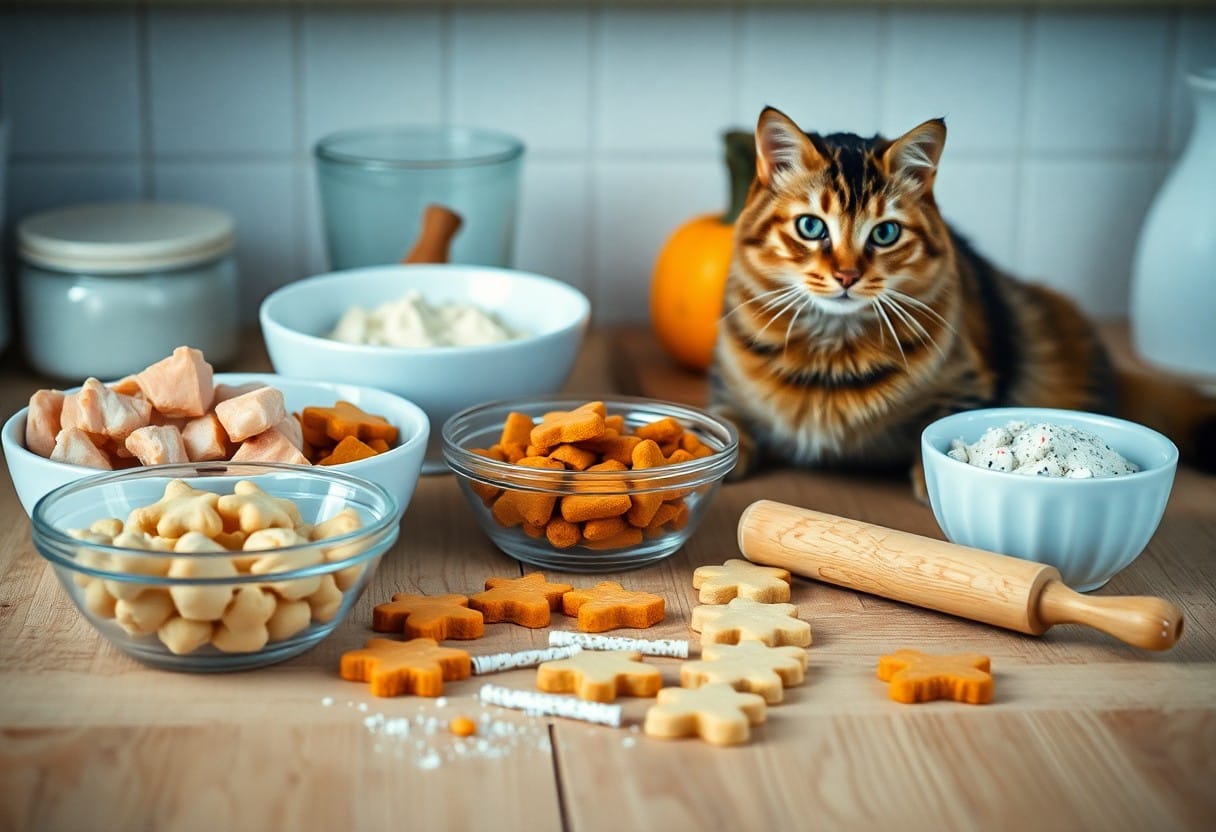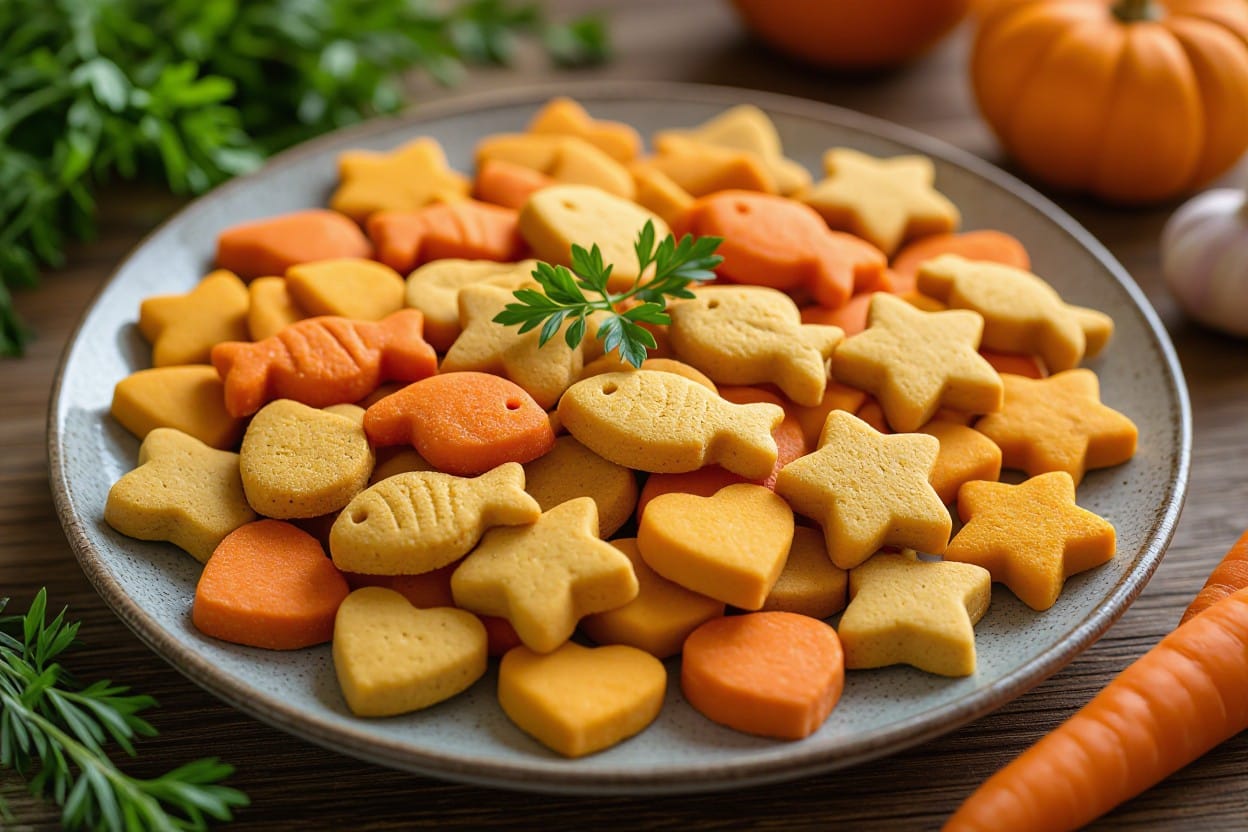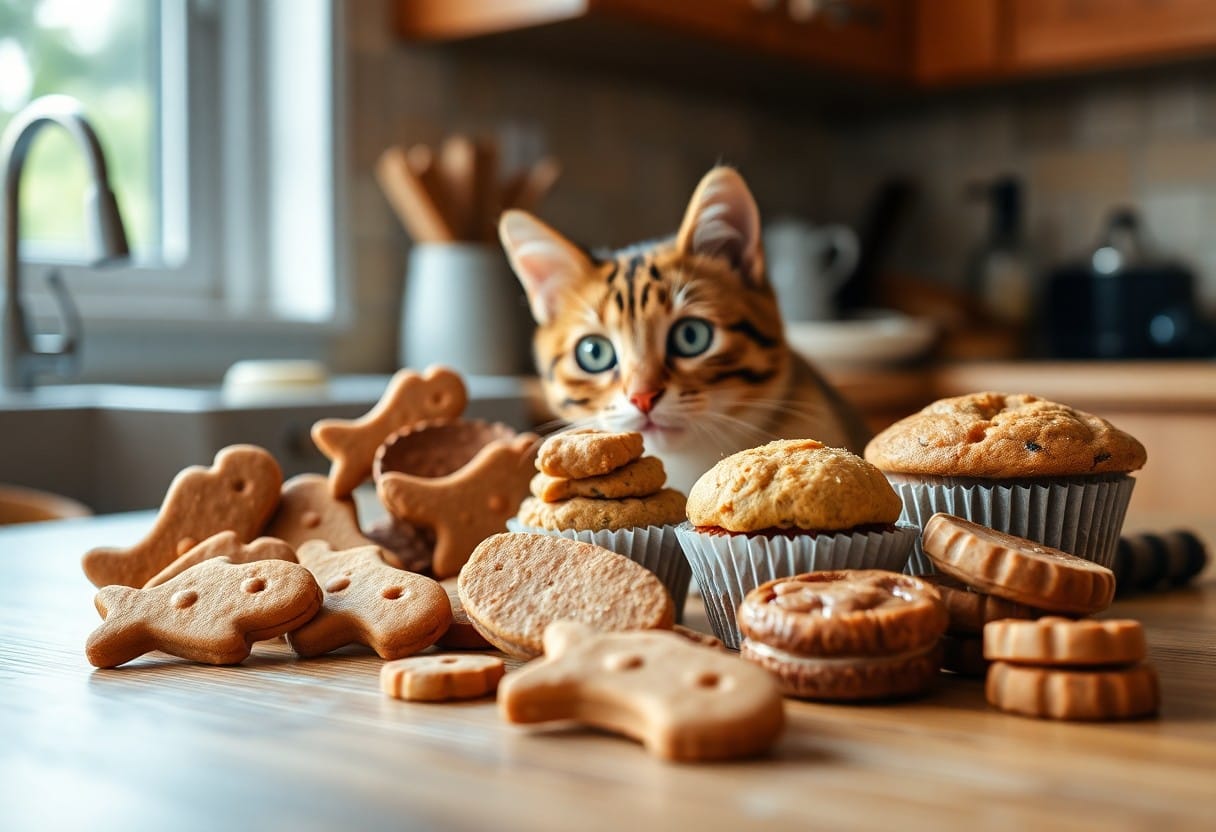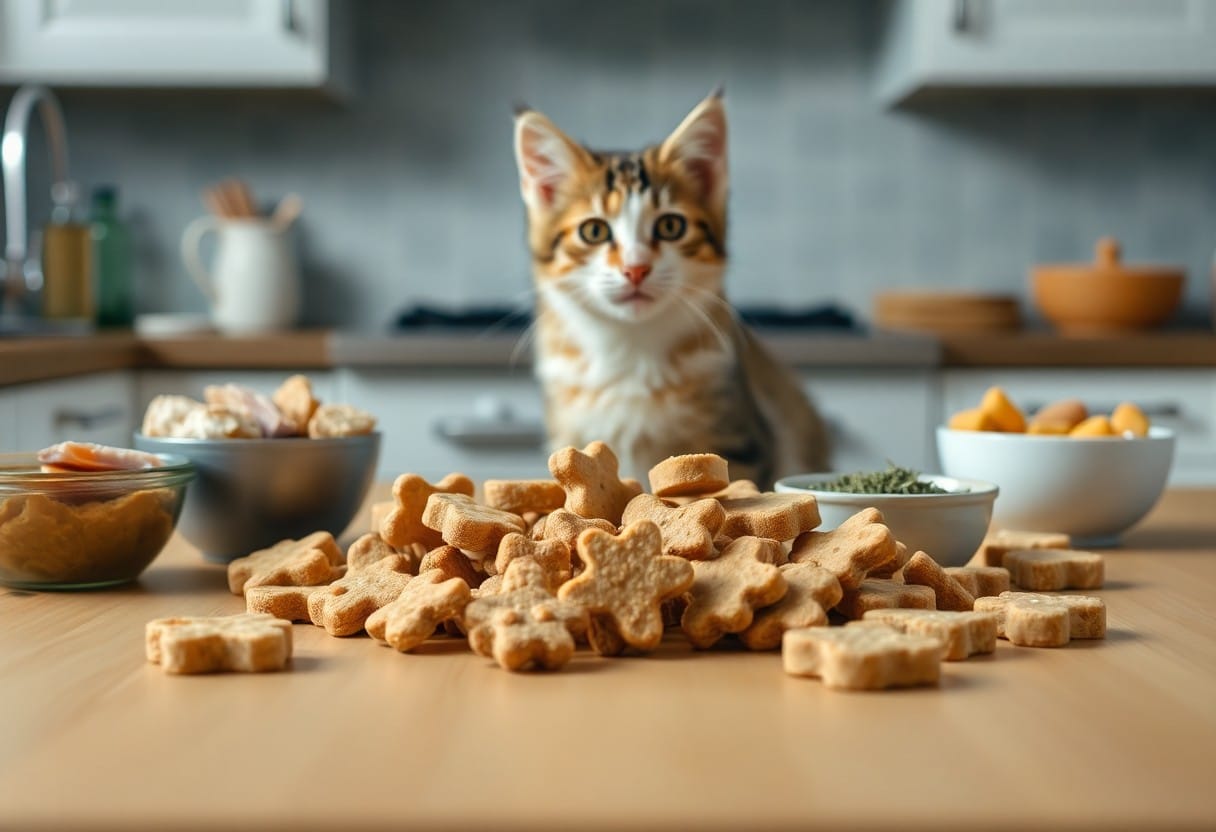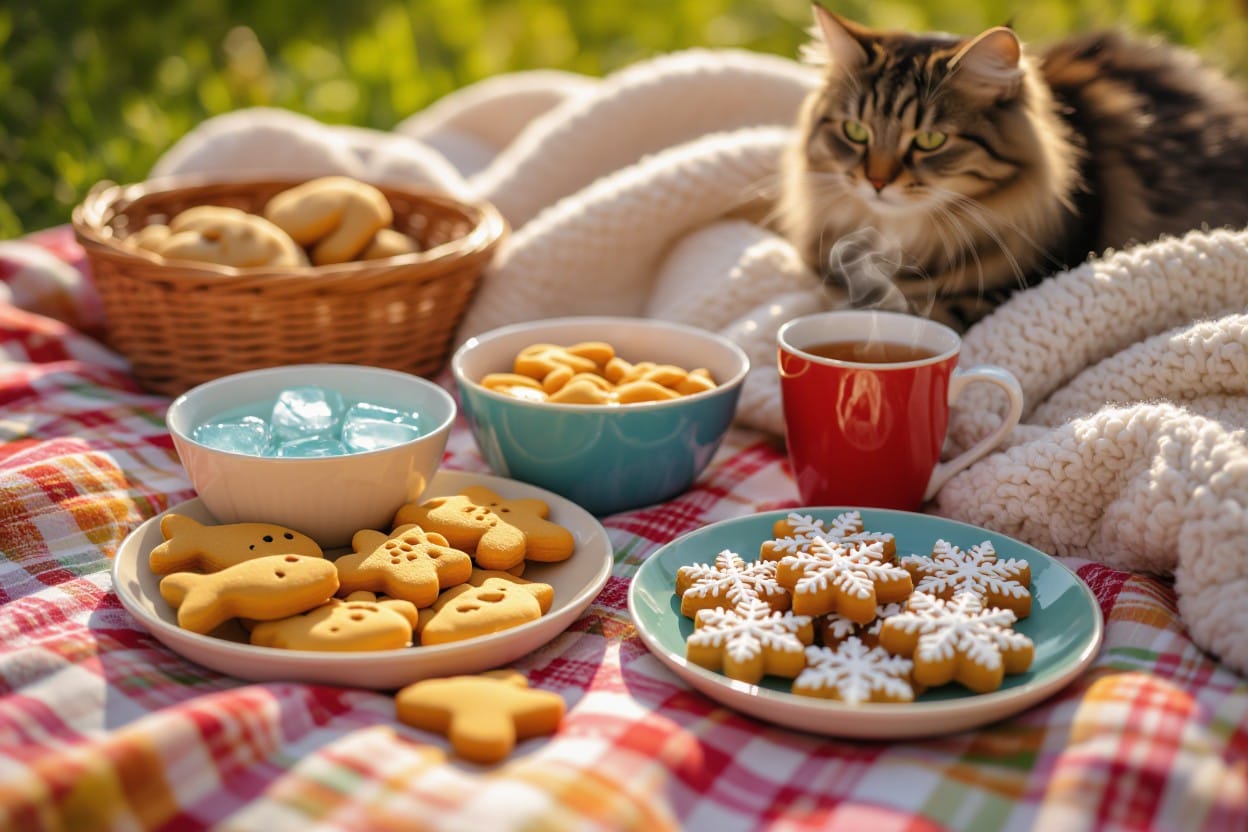Many cat owners are discovering the art of transforming simple ingredients into irresistible treats through culinary alchemy. By understanding the nutritional needs of your feline friend, you can create healthy snacks that not only delight their taste buds but also promote their well-being. With a few basic ingredients, you can craft delicious cat treats that are free from harmful additives. This blog post will guide you through the process, ensuring your homemade creations are both safe and satisfying for your furry companion.
Key Takeaways:
- Culinary alchemy can elevate basic ingredients into extraordinary cat treats, focusing on flavors and textures cats love.
- Combining ingredients like meats, fish, and vegetables with various cooking methods enhances both nutrition and palatability for felines.
- Experimenting with homemade recipes allows pet owners to tailor treats to their cat’s preferences and dietary needs.
The Intersection of Culinary Science and Feline Nutrition
Culinary science marries the creativity of cooking with the precision of nutritional science, creating a method for crafting cat treats that are not only flavorful but also beneficial for your feline friend. This intersection allows for a deeper understanding of how various ingredients can impact your cat’s health, ensuring you are making choices that support their well-being while treating them to tantalizing flavors. By leveraging vibrant ingredients and innovative cooking methods, you can satisfy your cat’s taste buds while simultaneously addressing their dietary needs.
Nutritional Needs of Cats: The Foundation
The dietary requirements of cats differ significantly from those of humans and even dogs. Cats are obligate carnivores, which means they depend on nutrients found primarily in animal-based proteins for survival. Essential amino acids, fats, vitamins, and minerals form the bedrock of their diet, making it important to focus on high-quality sources when creating treats. For instance, contributing taurine, an amino acid vital for your cat’s heart and eye health, can be achieved by including ingredients like chicken or liver in your homemade recipes.
Culinary Techniques That Enhance Flavor and Appeal
Employing specific culinary techniques can elevate the sensory experience of cat treats, making them more appealing and enticing. Methods such as slow roasting, dehydrating, and incorporating house-made broths can enhance flavors without the need for artificial additives. Utilizing fresh herbs like catnip or parsley not only adds a burst of flavor but can also provide digestive benefits. Additionally, rolling treats into enticing shapes or utilizing creative presentations can spark curiosity and engage your cat’s senses, turning a simple treat into an irresistible reward that they will eagerly anticipate.
The Alchemical Ingredients: Transforming the Ordinary
Delving into the world of culinary alchemy, you’ll discover how simple ingredients can be transformed into tantalizing treats for your feline friend. By understanding the right combinations and procedures, you can elevate everyday components into snacks that not only entice your cat’s palate but also provide important nutrients. Think beyond basic recipes; incorporate a blend of flavors and textures that delight their senses and promote health.
Uncommon Ingredients That Cats Love
Explore unique ingredients that can spark your cat’s interest, such as catnip, pumpkin puree, and salmon oil. These options not only enhance the taste but also offer additional health benefits. For instance, catnip can provide joy and stimulation, while pumpkin puree is rich in fiber and great for digestion. Combining such uncommon ingredients keeps your creations fresh and exciting for your feline companion.
Techniques for Flavor Enhancement and Texture Improvement
Enhancing flavor and texture is key to crafting irresistible cat treats. You can experiment with methods like slow roasting meats to intensify their natural flavors, or using a dehydrator to create crunchy bites that cats adore. Incorporating healthy fats from sources like fish oil improves texture while making treats more appealing. These techniques not only entice your pet but also allow for nutritious options that align with their dietary needs.
Consider using fermentation and brining techniques to add depth to flavors; these processes can make proteins more flavorful and digestible. For a protein-rich treat, try marinating chicken in a mix of fish oil and herbs, followed by a slow bake for enhanced flavor. Additionally, incorporating varied textures, such as crunchiness from ground dried meats or smoothness from pureed vegetables, makes your homemade treats more appealing. Paying attention to these details ensures not only enjoyment but also a nutritious offering that your cat will look forward to.

Crafting Irresistible Treats: A Step-by-Step Guide
| Essential Tools | Ingredients |
| Mixing Bowls | Chicken or Fish Flakes |
| Oven or Dehydrator | Whole Wheat Flour |
| Cookie Cutters | Eggs |
| Storage Containers | Catnip |
| Measuring Cups | Fish Oil |
Essential Tools and Ingredients for Homemade Treats
Getting started on creating delectable cat treats means gathering a few important tools and ingredients. Equip your kitchen with mixing bowls, measuring cups for precision, cookie cutters for fun shapes, and storage containers to keep your treats fresh. Ingredients like high-quality proteins (chicken or fish flakes), whole wheat flour, eggs, catnip, and fish oil deliver flavors that your cat won’t resist while providing necessary nutrients.
Recipes for Dual-Purpose Treats: From Treats to Meals
Transforming treats into meals is simpler than you might think. Recipes can be crafted to be both delicious snacks and nutritious meal components by incorporating protein sources with a base of healthy carbohydrates and fats. For instance, a blend of cooked chicken, sweet potato, and a hint of catnip, formed into bite-sized shapes, can serve as an enticing treat with meal-like benefits.
Consider making chicken and sweet potato morsels. By mixing shredded chicken with mashed sweet potatoes and forming them into small balls, you create a dual-purpose delight. Not only does this recipe cater to your feline’s taste buds, but it also provides protein and fiber – important for their overall health. You can bake these treats for a chewy texture, or steam them for a softer option that also tantalizes your cat’s palate. Store any extras in the fridge, and watch your furry companion thrive on these nutritious snacks that double as meals!
The Art of Experimentation: Personalizing Treats for Your Cat
Transforming simple ingredients into delightful cat treats involves a creative approach that’s all about personalization. Every cat has its own unique palate, so experimentation becomes your secret weapon in discovering what flavors, textures, and aromas will have your feline friend purring for more. By varying ingredients and methods, you can uncover combinations that are not just delicious, but also tailored to your cat’s preferences and dietary needs.
Deciphering Your Cat’s Preferences: Experimentation Strategies
Engaging in experimentation with your cat’s treats requires keen observation. Start by introducing a small variety of ingredients and note your cat’s reactions. For example, if your cat relishes a particular fish flavor, build on that and combine it with different bases like pumpkin or sweet potato, observing how it affects their enthusiasm. Using different textures, such as mixing crunchy bits with soft purees, can also help uncover their favorites.
Adjusting Recipes for Special Dietary Needs
Customizing your cat treats to accommodate their dietary requirements is vital for their health and well-being. Always keep an eye on any allergies or sensitivities your cat may have. Opt for alternative proteins like turkey or duck if your cat is sensitive to chicken, and you can experiment with grain-free options using alternatives like chickpea or lentil flour.
Moreover, researching specific conditions such as diabetes may guide you in minimizing carbohydrates and sugars in your treats. Incorporate nutrient-dense ingredients that are low in calories yet high in flavor, such as leafy greens like spinach or natural sources of fiber like pumpkin. Always consult with your vet before introducing new ingredients, ensuring you keep your feline’s health top of mind while creating irresistible treats they’ll love.
The Psychological Impact of Treats on Feline Behavior
The bond between you and your cat is enriched through the gifting of treats, which serve not just as snacks but as powerful psychological tools. These delectable morsels can stimulate your cat’s brain and affect their overall mood, leading to a more engaged and affectionate pet. Treats can elicit feelings of happiness and excitement, showing that food is not solely for sustenance; it’s a form of emotional communication that strengthens your relationship.
How Treats Influence Training and Bonding
Training your cat becomes significantly easier when you incorporate treats into the process. They function as effective motivators that encourage desired behaviors. As you reward your feline with tasty bites for following commands or using the litter box appropriately, you’ll not only enhance their learning curve but also reinforce your bond through positive experiences together.
The Role of Treats in Reward Systems
Treats play a vital role in the reward systems you establish for your cat. Felines respond well to positive reinforcement, and offering a treat serves as an immediate and gratifying reward that can accelerate learning and behavioral modification. A well-timed treat after good behavior not only reinforces that behavior but also increases the likelihood of repetition. The connection formed between the action and the reward sends a clear message to your feline friend, allowing them to associate certain actions with positive outcomes. Consistently using treats as rewards can lead to a well-behaved, happier, and more engaged cat, helping you both to enjoy life together to the fullest.
Conclusion
Drawing together the art of culinary alchemy and your commitment to your feline friend, you have the power to transform simple ingredients into irresistible cat treats. By understanding the flavors and nutritional requirements of your cat, you can craft delightful creations that not only satisfy their taste buds but also enhance their wellbeing. Embrace this opportunity to bond with your pet while exploring the exciting world of homemade treats tailored just for them.
Q: What is Culinary Alchemy and how can it enhance cat treats?
A: Culinary Alchemy refers to the art and science of transforming basic ingredients into something extraordinary through creative cooking techniques and flavor combinations. When applied to cat treats, this innovation allows you to elevate simple ingredients like chicken, pumpkin, or fish into irresistible snacks. By carefully selecting herbs, spices, and cooking methods such as baking or dehydrating, you can create treats that not only taste great to your cat but also offer added nutritional benefits.
Q: What types of simple ingredients can be transformed into cat treats?
A: Many common ingredients can be employed to make delightful cat treats. Popular choices include proteins like chicken, turkey, and tuna, as well as wholesome vegetables like sweet potatoes and peas. You can also utilize grains such as oats or rice flour for texture. By incorporating small amounts of cat-safe herbs like catnip or basil, the treats can be enhanced with enticing aromas and flavors. The key is to be creative with these ingredients while ensuring that they are safe and healthy for feline consumption.
Q: How can understanding flavor profiles help in making cat treats?
A: Knowing the flavor profiles that appeal to cats can significantly influence the success of homemade treats. Cats are obligate carnivores, meaning they are naturally drawn to savory flavors from meat and fish. By emphasizing these flavors and balancing them with complementary ingredients (like quinoa or pumpkin for added nutrition), you can create treats that are not only palatable but also appealing in smell and texture. Experimenting with different combinations allows you to tailor recipes to your cat’s preferences, making the treats even more irresistible.
